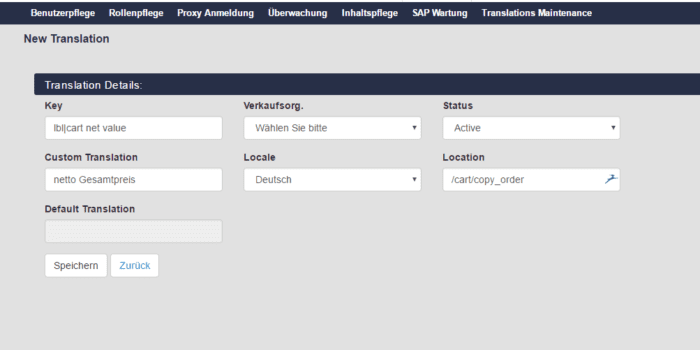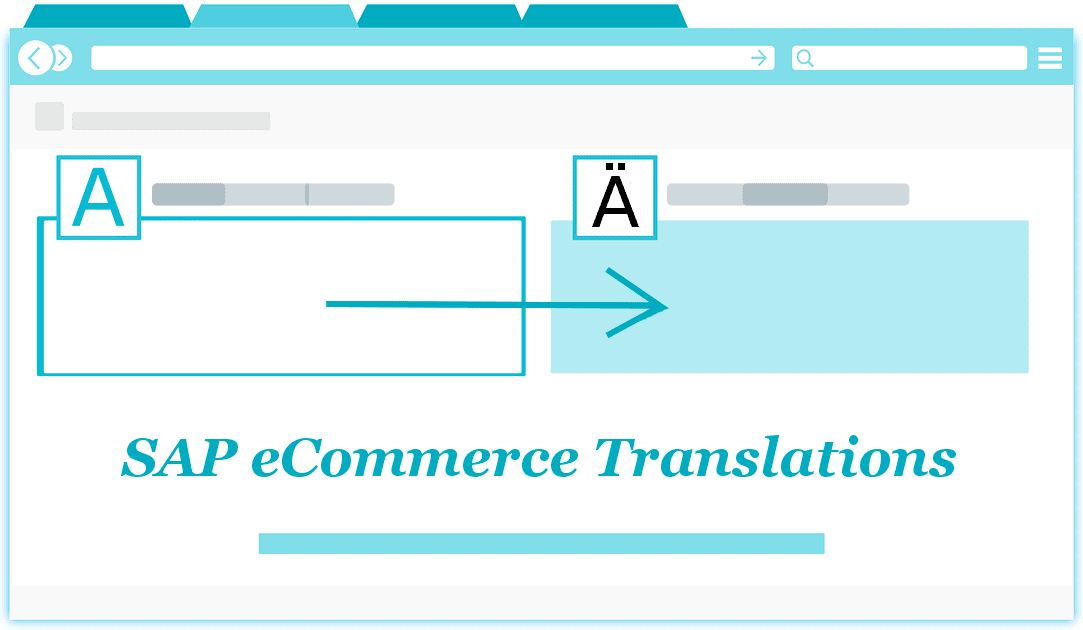Share
Author
George Anderson
Share
SAP eCommerce Translations
In today’s global market, personalization is the key to success. In the SAP B2B eCommerce world, personalization comes in the form of locally relevant brands and products, being able to accept local payment, utilizing local delivery methods, and displaying it all in the local language.
Local language presentation is critical, and managing those translations is a crucial component to successful SAP B2B eCommerce. This gets quite complex for many SAP clients because they have multiple divisions all around the world. In the case of SAP-integrated eCommerce, a company might have multiple microsites (eCommerce stores) talking to one SAP system in real time. What happens when each microsite, connected to the same SAP, needs to display content in different localized languages?
The scope of the problem
The Corevist SAP eCommerce app has always supported multilingual companies. But our old method of adjusting translations wasn’t scaling up well, and since the demand was increasing significantly, the time had come to take our solution to the next level.
In the past, a client had to fill out a ticket requesting the adjustment of a translation on their site. This process depended on passing spreadsheets back and forth and scheduling time with a developer. Since translation adjustment wasn’t an emergency, we would launch the adjusted translation with the client’s weekly deploy.
But we wanted to improve two aspects of our translations:
- How we communicate with clients to understand specific translation requests.
- The technical process of changing translations in our app.
We knew there had to be a better way.
Client communication: The unique problems of B2B translation
Business communication depends on a shared understanding of terms with specific meanings. Connotations and semantics can make or break this communication. For example, one of our clients has a French-language eCommerce store. The login portal welcomes the user in French—except for one conspicuous phrase: web shop, which appears in English.
If you translate “web shop” from English to French with Google, you’ll get a French phrase. But that phrase won’t work for our client. “Web shop,” borrowed directly from English and untranslated, is the phrase they want to use. It’s the phrase their customers use.
Another example is the French word “boîte,” which means “box.” While this may be a simple 1:1 translation between everyday French and everyday English, it isn’t that simple in a B2B eCommerce scenario. Here, our client didn’t want “boîte” to appear every time that we would use the English word “box” as a unit of measure. It turned out the relationship between the two words was not 1:1. It was complex and dependent on context.
In a digital-first world, there are many ways to get translations. But we realized that the best way to do it is to let the client themselves personalize translations for their industry and customers.
The solution: 1-hour collaborative translation workshops
In the world of SAP B2B eCommerce, providing multilingual support can’t be an afterthought. Considering that we have over 12,157 entities that can be translated across the application, multilingual support must be a core component, designed into the application from the start. At Corevist, we had that capability with our very first release. But along the way, we learned that we needed to support a more collaborative approach to the challenge of handling tens of thousands of translations.
Our translation management process has changed dramatically. Now, instead of requiring clients to fill out a ticket to request a translation, we compress that into a series of one-hour collaborative workshops between a client and our project manager. We can address unique translation requests within the timeframe of the workshops, and the project manager can implement those changes immediately.
The result is easy-to-implement, customized translations that meet our clients’ needs in the exact business scenarios in which they occur.
But what does this look like? How do Corevist Translations work for the real end user?
A simplified translation change process
Now the Corevist Translation tool appears in the graphic user interface. A Corevist Project Manager can make translation changes without the development team getting involved. This improvement enables our new translation change method (1-hour collaborative workshops with the client).

the Corevist Translation tool is now part of the graphic user interface.
The process is fairly simple. We send the baseline dictionary to the client Admin as a spreadsheet, and they can return it with their customized translations. But spreadsheets aren’t ideal for conveying contextual information. In the collaborative workshop, the client can explain crucial contextual information. In the course of that conversation, the Corevist Project Manager can change translations in the application in real time. The result is high-quality, contextually accurate translations that have the client’s full approval.
Translations are customizable to each unique business scenario
The Corevist Translation engine starts with a baseline translation. If the client doesn’t like certain translations, they can work with a Corevist Project Manager to customize the translations to meet their unique business needs—without the need for a developer. This process makes life easier for everyone. Developers can focus on heavier tasks, and the client gets translations faster while having a much larger voice in the translation implementation process.
Customization is critical to translation success. As the word “boîte” demonstrates, this is especially true with units of measure. Our translation tool enables us to “get it right” for our clients when it comes to units of measure in a non-English language.
Once we work out the kinks in the process, we plan to release full translation control to clients in an upcoming quarterly release. That will fulfill our vision of providing contextually accurate, fully customizable, client-managed translations.
You can run multiple stores, each in its own language, from one SAP
With the Corevist Translation tool, a multinational company can run several eCommerce stores (microsites) in different languages—all talking to the same SAP system in real time. The eCommerce stores can be tied to the same Sales Area in SAP, or to different Sales Areas. For each microsite, you can have a unique translation database to handle a unique language.
That’s powerful.
You can offer multiple languages in one eCommerce store
One of our clients has operations in the US and Canada. When you sign in as a Canadian user, you can work in English or French. Since Canada has two official languages, the client wanted to have two languages available on the same site—within the same country, not in different countries.
This is easily set up with the Corevist Translations tool. We can assign multiple translations to be available in the same SAP Sales Area, the same eCommerce site, and/or the same country.
You can run multiple languages for the same user
We set up this option in the user profile. We give them the option to choose a language. In other words, our translation feature can toggle the displaying language per user, not just per microsite, sales area, or country.
We provide total flexibility in how translations are applied. We can deploy them any way you need, at any level.
The Takeaway
Good translation depends on a deep knowledge of both languages and an understanding of context. For our global SAP eCommerce clients, that means an intelligent translation service, coded by language experts, built directly into their eCommerce solution. We couldn’t see any other way to solve the issue—and as far as we know, our platform is the only SAP B2B eCommerce solution that includes translation management off the shelf.
With built-in translations, we’re making life a little easier for SAP eCommerce users. If your company has non-English language needs, and you’re concerned about presenting accurate written communication on your eCommerce store, don’t hesitate to get in touch with us. Let’s talk about how eCommerce translations can ease order friction and miscommunication for your customers.









